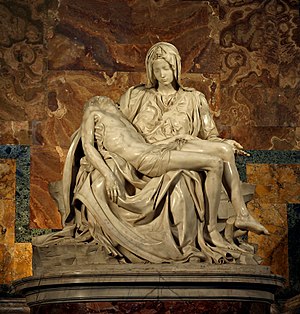 |
| Ancient Greek Statue google image |
by John Berger
I am continuing to re-read Berger's book after a long absence. It was one of the reccommended text when I was taking graduate level art history. It has been many years, but I find it as fascinating as before. It is not an easy read, but full of deep and thoughtful statements about our relationship to visual images and what we accept as real in our world. What emerges is that how we see is through a set of filters of our own making. I thought I would share a few of his ideas with you and then discuss the thoughts he presents. His writing is bit dry so hang in with us as we decipher these diamonds in the rough.
"Images were first made to conjure up the appearances of something that was absent. Gradually it became evident that an image could outlast what it represented; it showed how somebody or something had once looked and thus by implication how the subject had once been seen by other people. Later the specific vision of the image-maker became part of the record. An image became a record of how x had seen y. This was the result of an increasing consciousness of individuality." Berger
 |
| google image Cave Paintings of Lascaux France |
 |
| Egyptian Image of a body Google |
So let see if we can say this is simpler terms. Cave man painted pictures of animals he hunted on the walls of his den with charcoal and chalk and red clay. He drew an image of something that was absent..he had killed and was no longer there or the herds had migrated for the season. Later other cavemen and later peoples see the images the first cave peoples drew and accepted their vision of what a deer or stag looked like. Then for centuries people drew deer in the same manner and accepted that deer looked like that image. It became part of the record of how the original artist saw and experienced deer from his point of view. Think of how he drew the deer and the feelings he brought forth. He was a hunter, he drew on ground level, not from above, he drew a magnificent creature that he as a hunter would be proud to kill to supply his clan and family with food. He drew the deer as a huntsman might and he drew with the elements he had at hand in the lighting of the cave which would have been dramatic contrasts due to the firelight. So now we beginning to see how the image maker (artist) draws us into his way of seeing, his view point.
Now think of Europe and how this process lasted in the arts for a long time. Drawing before the understanding of how a person is structured was one way to think of this...artists ideal of a person is repeated and repeated with out proper proportions or skeletal or muscular accuracy...until bodies are dissected by Da Vinci and others in secret. Then the way the image maker...Da Vinci...Michelangelo...and others portray people becomes radically different and more life like. It changes how we view and accept a person looks. Other artists then accept that view and paint in bodies or animals in the same way.
 |
| Leonardo Da Vinci's Study of Man and Body Proportions google |
 |
| Michelangelo's Pieta google image |
As Berger puts it, " No other kind of relic or text from the past can offer such a direct testimony about the world which surround other people at other times. It is in this respect that images are more precise and richer than literature." Berger goes on to say that in saying this he is in no way denying the expressive and creative nature of art, but it even more so allows us to experience the times and the artists experience with the visible.
Opinions and discussions are welcome.

No comments:
Post a Comment